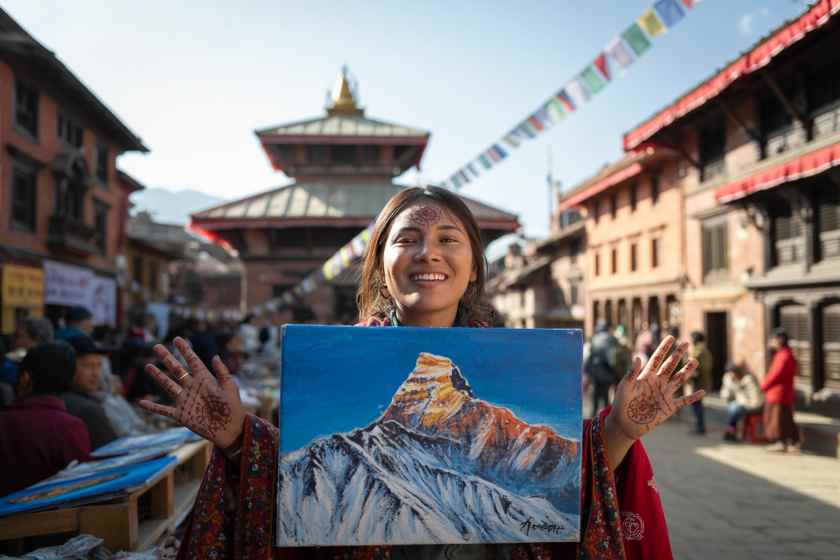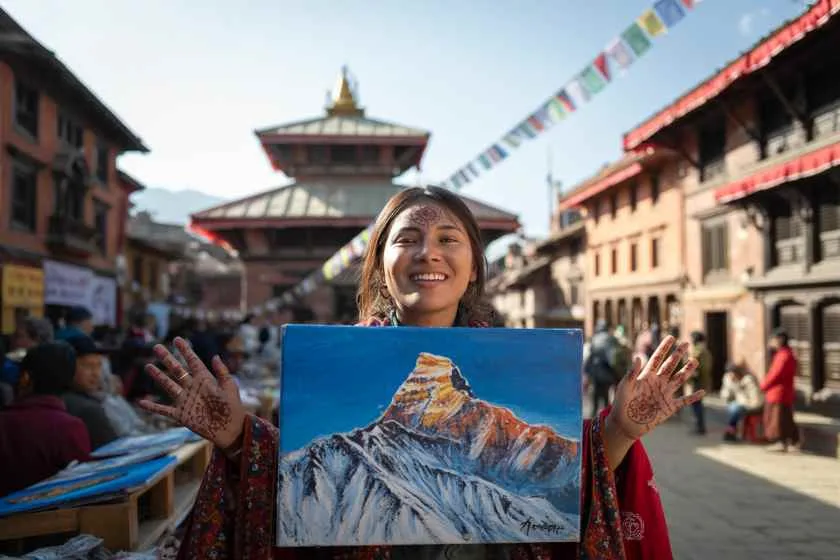Published on
August 25, 2025

Nepal is rolling out the red carpet for the Art and Culture Festival in September 2025, and excitement is already building. Held in the lively streets of Kathmandu, the festival is geared up to boost tourism and create a lively mix of cultural sharing. From stunning art displays to breathtaking dance performances and hands-on workshops, visitors will dive into the country’s colorful heritage. People from every corner of the globe, ranging from art lovers to curious travelers, are expected to flock to the city, ready to witness the age-old traditions and creative spirit of Nepal.
Organizing the festival is just one piece of Nepal’s ongoing plan to shine as a go-to cultural travel spot. With diverse traditions, UNESCO heritage sites, and a creative history that runs deep, the country is opening up a treasure chest of experiences. Attendees will not only see beautiful crafts and performances, but will also walk away with a much fuller picture of Nepal’s story and spirit.
Tourism Growth in Nepal Through Cultural Festivals
While trekkers have loved Nepal’s epic Himalayan views for decades, like Everest and the Annapurna Circuit, there’s a new trend gaining altitude: cultural tourism. The upcoming Art and Culture Festival is ready to take the spotlight. This mega-event will showcase the country’s rich artistic traditions—from intricate handicrafts and colorful traditional dances to soul-stirring music and finger-licking local dishes.
The festival is more than just a party—it’s a plan to broaden Nepal’s tourism menu. Yes, the mountains are magnificent, but the festival invites visitors to dig deeper. Guests will find local musicians, dancers, and theater troupes performing daily, alongside art exhibitions filled with Nepalese creativity. Imagine wandering through stalls of gorgeous handicrafts, feasting on momos while watching a stunning mask dance, all in a lively, colorful atmosphere. The goal is clear: to let every tourist leave with more than just mountain selfies and to help Nepal celebrate the cultural heartbeat that makes the country unforgettable.
International Tourism and Cultural Exchange
The upcoming Art and Culture Festival is not just a celebration of creativity; it’s a dynamic meeting point for cultures around the world. Artists and cultural ambassadors from neighboring nations and farther-flung communities will travel to Nepal to take part. Festival-goers can look forward to seeing how Nepal’s colorful indigenous traditions blend with customs and art from every corner of the globe. Watching this cultural fusion is itself a powerful draw for tourists and will add a vibrant layer to the entire event.
Kathmandu is the festival’s backdrop, and it could not be a more fitting host. Known as Nepal’s cultural center, the city is dotted with UNESCO World Heritage treasures, like the Swayambhunath Stupa (often called the Monkey Temple), the sacred Pashupatinath Temple, and the monumental Boudhanath Stupa. These iconic sites, paired with the festival’s rich programming, create a magnet for culture-minded travelers. Attendees can weave visits to these landmarks into their schedules, catch fascinating local performances, and dip into a living art scene that thrives in the city’s streets and galleries.
Boosting Local Businesses and Tourism Infrastructure
Organizers project that the Art and Culture Festival will be a major shot in the arm for local businesses in Kathmandu and surrounding areas. Hotels, restaurants, and tour operators are ramping up services in anticipation of the crowds. During the event, the streets and public spaces will come alive with stalls run by local artisans, who will showcase and sell the metalwork, textiles, and wood carvings that Nepal is famous for. This direct interaction benefits visitors, who get to take home authentic keepsakes, and it uplifts the local economy on an international stage, shining a spotlight on Nepal’s rich craftsmanship and creative spirit.
The arrival of international tourists for the festival is already shining a light on Nepal’s transportation and lodging systems. To keep everything running smoothly, the Nepal Tourism Board (NTB) is joining forces with local operators, the government, and the private sector. Their goal is for every visitor to find high-quality services so that they keep returning. A successful festival is good for business, of course, but the bigger payoff is better roads, better hotels, and smoother airline schedules for everyone in the future.
The festival itself is also a test case for boosting sustainability. NTB and local organizers are following a simple motto: enjoy the celebration without leaving behind a mess. Scenery that inspires Instagram photos shouldn’t later become a waste collection zone. Vendors are using biodegradable dishes, decorations are being made from recycled materials, and the festival map is printed on seed paper that tourists can plant later. Behind the scenes, organizers are working to offset the event’s carbon footprint using local solar and hydropower.
Look for easy steps that any traveler—or local—can take. Ride the tourist buses instead of grabbing taxis fifteen times a day. Bring a reusable water bottle and refuse that extra plastic. Spend a few extra rupees on crafts, snacks, or stays in guesthouses that treat both the planet and the people with respect. If every visitor makes one small change, the festival becomes the kind of event that is good for the day and good to the planet, too.
Looking Ahead: Nepal’s Cultural Tourism Future
Nepal is moving forward in building its cultural tourism scene, and happenings such as the Art and Culture Festival are critical for carving out an exciting new identity for the country. This festival will do much more than fill a calendar—it will spark conversations, enrich the experiences of visitors, and help Nepal keep its lead in the region’s tour development.
Alongside the festival, the country expects a wave of fresh tourism ideas. Think art-themed travel packages, hands-on workshops, guided art and music strolls, and rich stage performances that let the world taste, touch, and see Nepalese culture. With these smart plans, Nepal will keep attracting travelers who want sweeping mountain views and the stories, sounds, and flavors of a culture that welcomes the world.
Conclusion
Nepal’s upcoming Art and Culture Festival is poised to boost the country’s image as a top choice for cultural tourism. From music and dance to craftsmanship and spiritual celebration, the festival shines a spotlight on the diverse heritage that makes Nepal so special. While visitors may experience close-up the stories, colors, and tastes that shape Nepal’s identity, the gathering also promotes partnerships with cultural leaders and artists from around the globe. This blending of local spirit and international friendship reinforces the idea that Nepal is the cultural heart of Asia. The festival is planned around responsible and sustainable practices, meaning that artists, traders, and communities are all respected and rewarded. Because of this thoughtful approach, the gathering is already earning a permanent place on the country’s cultural tourism calendar, and can be expected to welcome travelers for generations to come.






